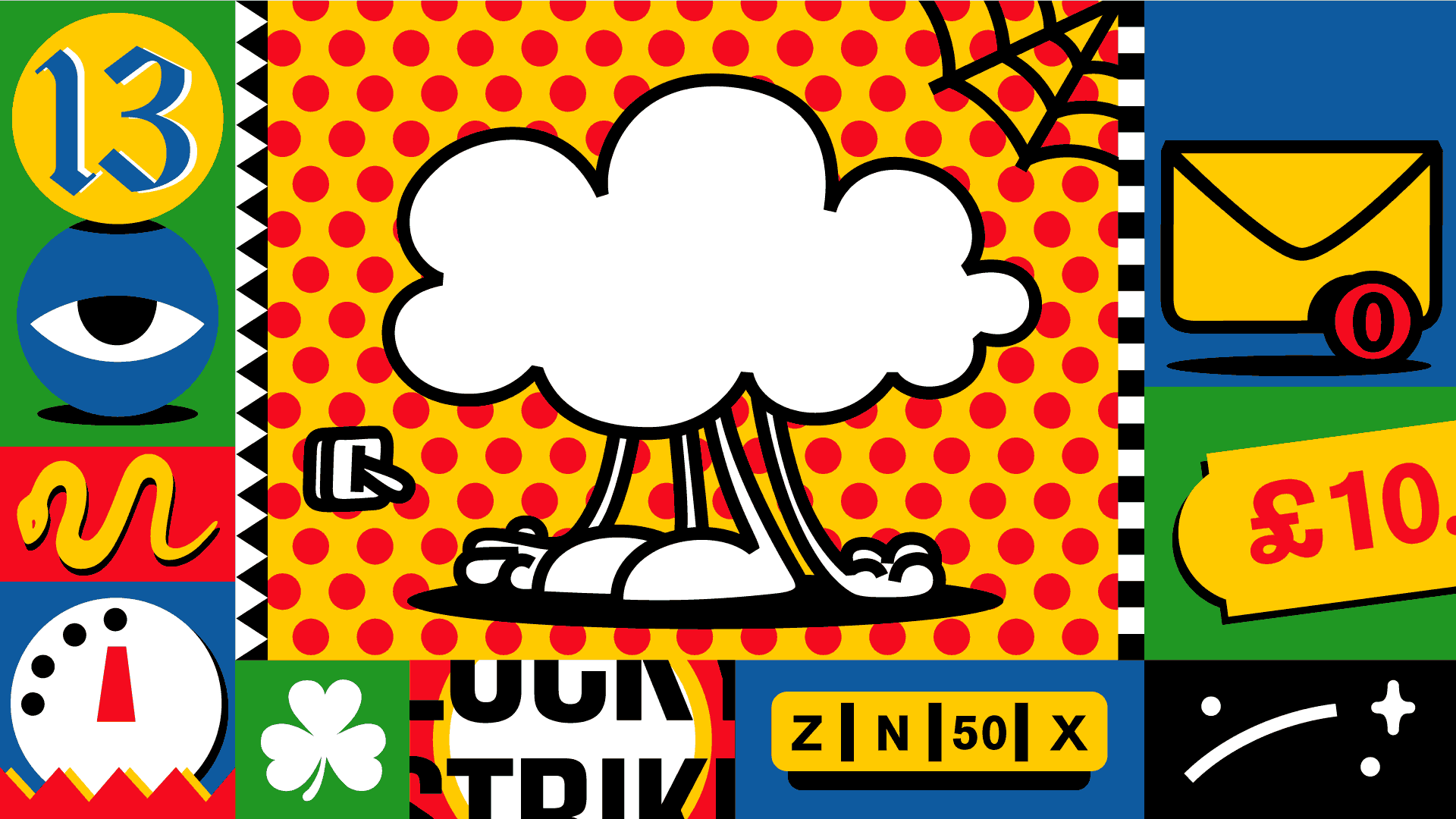
Hold your nerves
Stress wrecks too many days before they've even begun. It creeps up as soon as the alarm jerks you awake. Fingers reflexively unlock your phone. Emails bound in with a jolly ping: things you should have done last week; pointless meeting requests; bills to pay.
Over a gobbled breakfast you scan the headlines: wall-to-wall misery and pointlessness. On the train you turn to social media for relief. Gillian is funnier than you. Alex got promoted again. Laura's sunning herself in Thailand. You're here, packed in, surrounded but alone, rattling your way towards another overstretched day in an unfulfilling role. There's talk of redundancies and an appointment with the boss looms. Thoughts turn to your dream job. Your heart rate steps up again. Even if you had the energy to fill in the form, you wouldn't get the job. Besides, your sneezing neighbour's probably just infected you with the Zika virus.
Stress. We know what it feels like, we can smell it on others, we complain about it most days. But what is it? Now that's a slippery question.
Apparently, we're living through an epidemic of it. Latest figures from the UK government's Health and Safety Executive state that stress cost the economy nearly 10m working days last year. Forty-three per cent of all sick days were chalked up to stress. Across the Atlantic, a major 2014 survey conducted by radio network NPR showed that 49 per cent of Americans reported a major stress event in the last year. In 2013 US doctors wrote 76m unique prescriptions for anti-anxiety drugs Xanax and Ativan. With the media pushing images of stress-induced heart disease, strokes, obesity, depression, ulcers and cancer, it's hard not to conclude that stress kills.
But consider this: just a century ago nobody got stressed. They suffered with their nerves; got a touch of the vapours; they worried; but they were never stressed. Stress happened to metals subjected to powerful forces and to syllables in elocution classes. In fact, our current view of stress – what it is, what it feels like, and when it is harmful – evolved surprisingly recently. This matters. Recent research shows that the way we think about stress has a profound influence on how it affects us.
Instead of doing battle with our personal stress demons, can we put their diabolic energy to good use?
There is no doubt that prolonged, uncontrollable stress – particularly if suffered in childhood – can be profoundly corrosive and debilitating. But what of the familiar stresses of day-to-day life? Are they actually damaging you? Might the belief that stress is harmful be self-fulfilling? And what would a stress-free life really look like? Instead of turning in on ourselves and doing battle with our personal stress demons, might we be able to put their diabolic energy to good use?
Pull back for a moment from your daily hustle and you'll see that many of us are incurably hooked on stress. We thrive on it. We get a kick out of surviving the high-stakes presentation, meeting the deadline and overcoming our fears and prejudices. Watching a thriller, we're on the edge of our seats, pulses racing. Sports, on the field or on television, can propel us into "fight or flight" mode. Humanity's fascination with gambling hinges on stress.
If the most skilled physiologists in the world could peer beneath the skin of a thrill-seeker on a rollercoaster and an out-of-their-depth job interview candidate, they'd struggle to tell them apart. Deep in the brain, they'd see a structure called the hypothalamus fired up. With each lurch of the ride or disarming question asked, the hypothalamus signals to the adrenal glands, which sit atop each kidney. The adrenals then squirt a shot of adrenaline into the bloodstream. In the background, the hypothalamus prods the pituitary gland, which passes a different message on to the adrenal gland. This ups the production of cortisol, the textbook 'stress hormone'. Flipping these key biological switches triggers the familiar bodily symptoms of stress: a pounding heart, raised blood pressure, dilated pupils, arrested digestion and a damped-down immune system. In both cases, the biological stress response would look very similar.

Even if we could eliminate stress entirely, or smother it with pharmaceuticals, we wouldn't want to. To muzzle the stress response is to silence the good as well as the bad. At best, stress can motivate us to achieve more and fix the sources of our stress. Boredom is stressful in its own way: ask a caged lion, or an understimulated teenager. In fact, as animal psychologist Francoise Wemelsfelder told New Scientist recently, boredom may exist to spur us back into activity. This half-forgotten idea, that some degree of stress can inspire and elevate, is common sense. It also has deep roots in the earliest scientific study of stress and stress responses.
Back at the beginning of the 20th century, two American psychologists, Robert Yerkes and John Dodson, wanted to know how stressing out lab mice affected their learning. They set the rodents navigational challenges and punished wrong turns with small electric shocks to the feet. In their terminology, larger electric currents caused greater 'arousal'.
They spotted some consistent trends. When they gave mice an easy task (choosing between a black or a white tunnel, achieved by different lighting) the relationship between the strength of the shock and the speed of learning was simple. The greater the stressor, the quicker the mice learned to pick the right tunnel.
When the challenge was subtler (differentiating between grey tunnels), the response was less straightforward. Weak shocks provided little impetus to learn, but as the zaps got stronger, the mice gradually upped their game. They focused on the task and remembered the consequences of wrong choices. Yet, at a certain point, the high stress levels that helped with the easy task became counterproductive. Overwhelmed, the mice skittered around at random, vainly trying to escape.
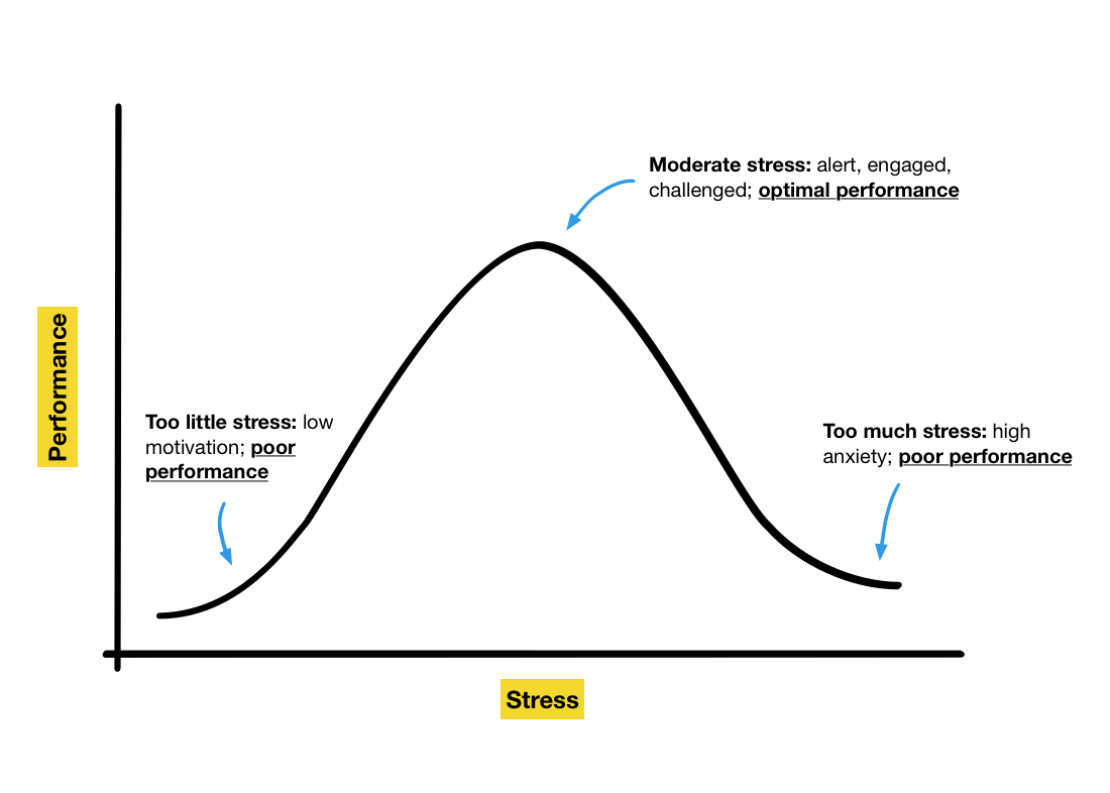
On a graph, the relationship between stress and performance on onerous tasks traces an inverted U-shape. Some degree of stress helps, but there is a clear tipping point, beyond which stress becomes paralysing. These findings became the Yerkes-Dodson law.
This was all very well for mice, but could it be applied to the vagaries of human existence? According to Canadian-Austrian endocrinogist Hans Selye, the 'father of stress', it could. It was 10-times Nobel prize nominee Selye who first described the key glands, hormones and nerves of the biological stress response during the 1930s and 40s. Selye was also one of the first to apply the word 'stress' to human biology (he once quipped that he might have chosen a different word had his grasp of English been better).
For Selye, 'stress' described an all-purpose response the body had to any demand placed upon it. When stress is on the upswing of Yerkes and Dodsons' inverted-U performance curve, Selye calls it 'eustress'. This is where good teachers and managers should push their charges: to the sweet spot that separates predictable tedium from chaotic overload. When stress gets more persistent, unmanageable and damaging, Selye called it 'distress'. Eustress and distress have identical biological bases, they are simply found at different points on the same curve.
We know this, but today stress has a terrible public image, often synonymous with distress. While some wear their stress as a badge of honour ("I'm important enough to be stressed," they think), deep down even the most gung-ho City workers probably stress about their stress. And in painting stress as a beast, we grant it more destructive power.
Sign up to our newsletter
When did we come to view stress as the universal enemy? Mark Petticrew, Professor of Public Health Evaluation at the London School of Hygiene & Tropical Medicine, has sifted through a huge archive of historical tobacco industry documents. He revealed that a large proportion of stress research during the second half of the 20th century was funded, steered and manipulated by this most unexpected of benefactors. From the late 1950s, Hans Selye himself received hundreds of thousands of tobacco-stained dollars. He also allowed industry lawyers to vet his research and appeared in several pro-tobacco propaganda films.
"They put a massive, massive amount of money into it," Petticrew told me. "This isn't a side story in the history of stress."
Why were tobacco manufacturers so interested in stress? First of all cigarettes were marketed as a stress reliever. "To anxiety… I bring relief," reads a 1930s advertisement for Lucky Strike. So if research could help them pin poor mental and physical health to stress, this sort of message would carry more weight. (Incidentally, the still widespread belief that smoking reduces anxiety appears to be wrong).
Later, as evidence that smoking caused cancer and heart disease piled up, the tobacco industry became hell-bent on proving that stress was an equally significant risk factor. They used the authority of Selye and several other leading stress researchers as a smokescreen (pardon the pun). "Doubt is our product," read a leading tobacco industry executive's 1969 memo. And so doubt they sowed. Time and again they argued that stress was a major cause of disease. Those seeking to control tobacco were barking up the wrong tree, they claimed.
It worked: they convinced the general public of the evils of stress and diverted public health research for at least a decade. With tobacco regulation and compensation payouts postponed, the profits kept rolling in.
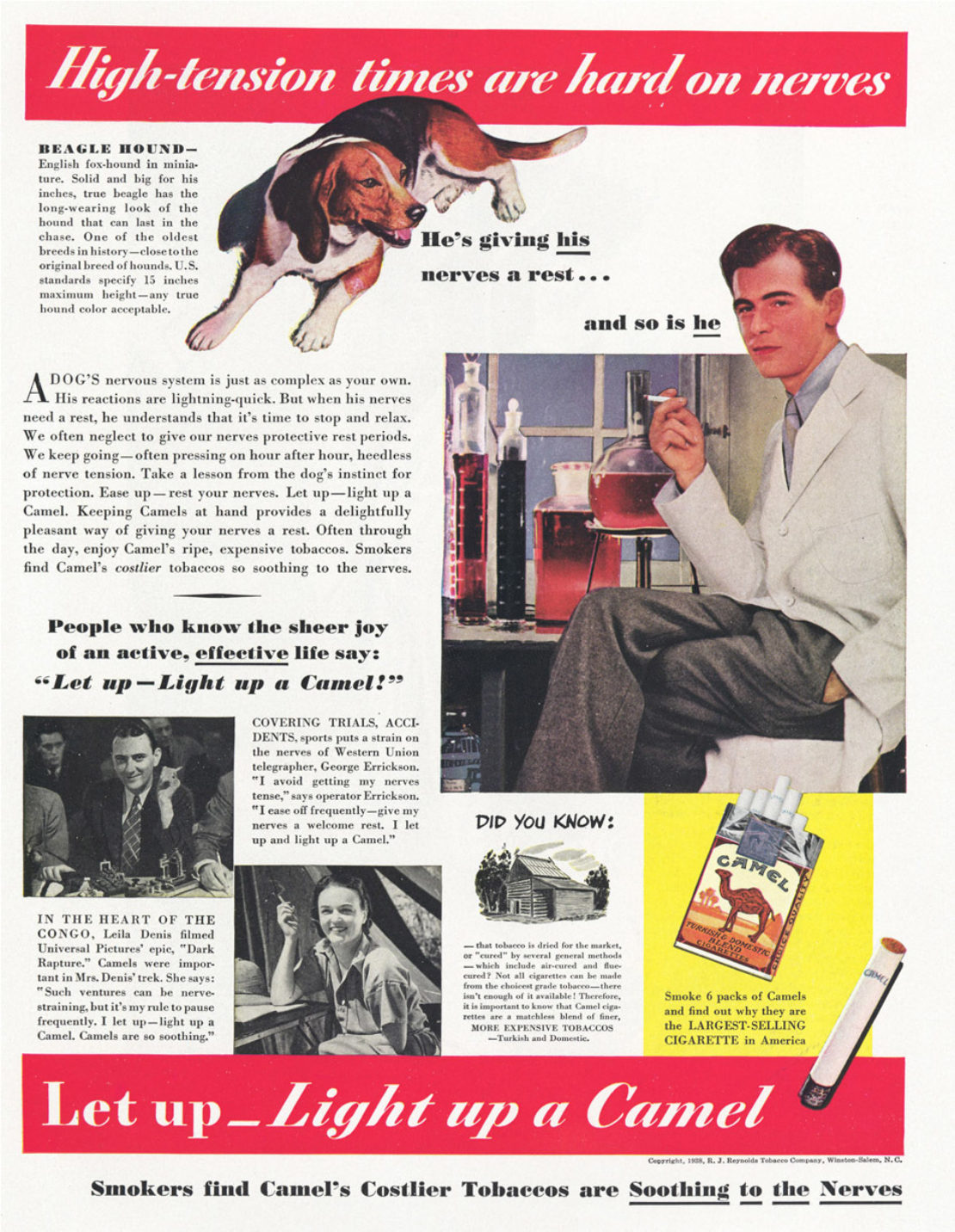
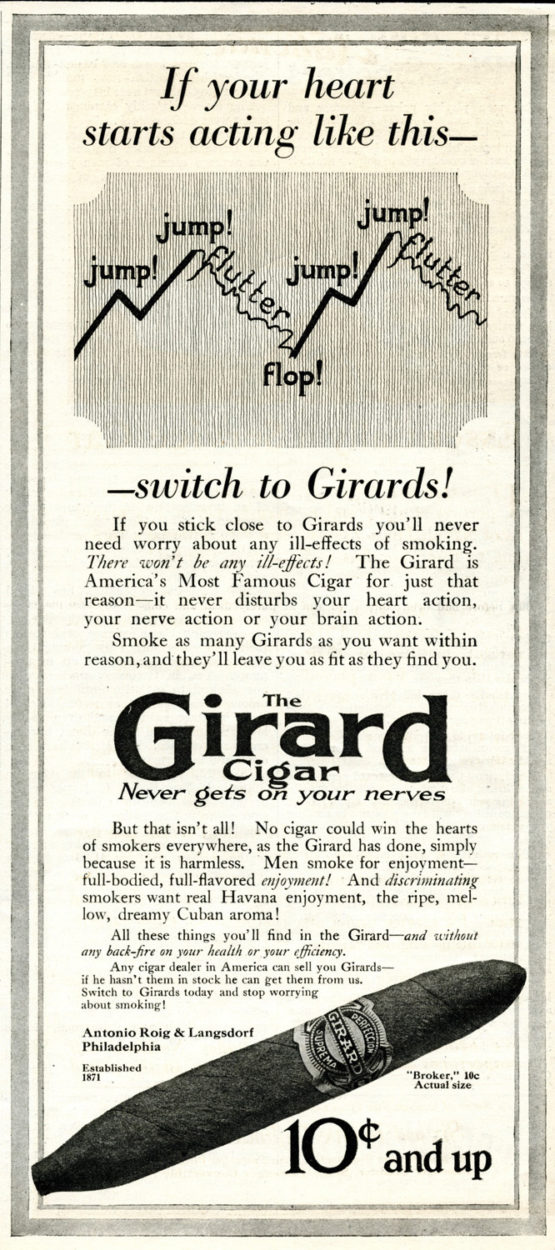
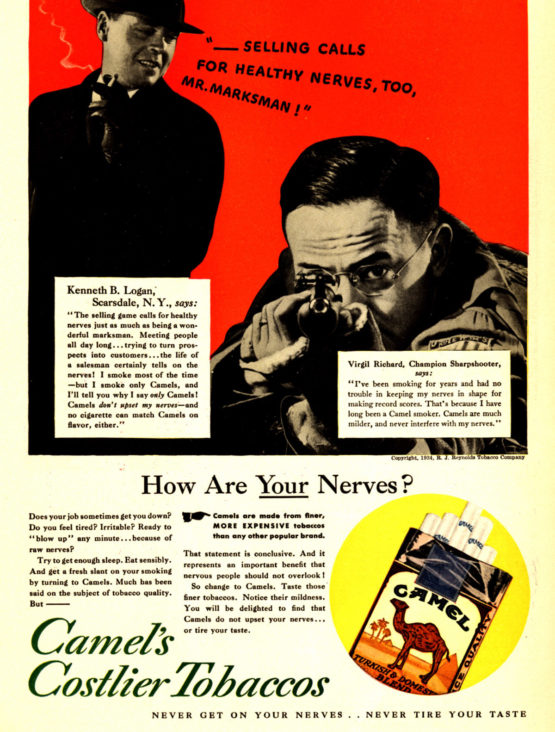
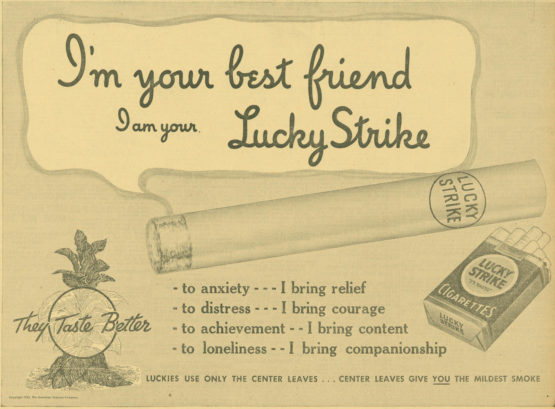
So should we doubt the veracity and neutrality of all the foundational research into stress as disease? "I wouldn't want to argue that stress doesn't exist, or that it isn't bad for your health and certainly your mental health," says Petticrew. "But you can't ignore this story."
He goes on to describe concrete 'findings' that industry-funded researchers got wrong. Prominent among these was a link between coronary disease and people displaying so-called 'Type A' personality traits: competitiveness, ambition and anxiety. Such temperamentally 'stressed' people were especially likely to suffer heart attacks and, not coincidentally, to smoke. Then the association simply faded away.
"Aside from the scientific weaknesses, which are many, Type A is a cultural artefact to some extent constructed by the tobacco lobby," says Petticrew. Despite its fragile foundations, the Type A myth persists today. Pettigrew calls such research, which continues to be published despite repeatedly negative findings, 'zombie science'.
If we believe stress is going to hurt us, it is more likely to hurt us
The long shadow cast by decades of one-sided, propaganda-laced stress research has led many of us to believe that stress is a direct cause of heart attacks. But the British Heart Foundation's website clearly states, "There is no evidence to suggest that stress causes coronary heart disease or heart attacks." Nor does it cause stomach ulcers: a bacterium called H. pylori does that.
Yet the tobacco-funded researchers didn't get it all wrong. Stress does have clear causal links to some diseases, particularly mental illnesses including depression, anxiety disorders, schizophrenia and addictive behaviour. High stress levels do appear to be a general risk factor for early death, particularly for middle-aged men. Moreover, we all know how unpleasant stress can be. From insomnia to binge eating and boozing, we respond to stress with all sorts of counterproductive and antisocial behaviours. And that's partly why the tone of messages we hear about stress matters so much. Humans are inherently suggestible and particularly vulnerable to warning messages about our health, especially when those messages seem to be backed by science.
With mice in a cage, you can measure the tipping point – the precise current of the electric shock – where good stress becomes bad. You can see how many weeks of stress cause adrenal glands to enlarge and immune systems to wither. But when it comes to humankind, we don't need the lurking menace of a lion in the long grass to activate our stress response. We can do it perfectly well for ourselves. All it takes is a negative thought, the memory of an insult, or a vague feeling of unease.

So, we can think our way into stress. And, as recent evidence shows, if we believe stress is going to hurt us, it is more likely to hurt us. This is one message emerging from the Whitehall II project, a long-term study of 10,000 UK government civil servants, set up in 1985 to study the social, economic and personal determinants of health and disease. A 2013 analysis of Whitehall II data concluded that people who believe stress adversely affects their health are more than twice as likely to suffer a heart attack, regardless of the amount of stress they appear to be under.
There is a flipside to this gloomy news, though. If our thoughts and beliefs can switch on a damaging stress response, mightn't they also switch it off? Could the power of suggestion be a partial vaccination in the battle against the stress epidemic? This is the contention of Alia Crum, an ambitious young psychology professor at Stanford University.
Crum is a flagbearer for the on-trend science of mindset manipulations. In 2007 she showed that if hotel chambermaids come to think of their work as exercise, they lose weight and their blood pressure falls, apparently without working any harder. And in 2011 Crum showed that if we consume a healthy snack dressed as a calorie-laden indulgence, the power of belief dupes our hormonal appetite system into feeling sated.
More recently she turned her attention to our core beliefs about stress. Crum's unlikely collaborators were 388 employees of UBS bank, in the aftermath of the 2008 financial crisis. This was a time of turmoil, layoffs and uncertainty at the firm. Stress was rife. Crum wanted to know how these overworked bankers thought about stress and whether she could change their convictions.
She split the bank workers into three groups. A small control group got no training. Over the course of a week, the other two groups were shown three different short training videos. Superficially the videos were similar: they talked about stress and its effects on mind and body. One group's films dealt with disease risk, anxiety, depression and distraction. They showed basketball ace LeBron James missing a decisive shot under pressure, implying stress is debilitating. In the other videos LeBron sinks his basket, the message being that stress sharpens attention, boosts cognition, enhances relationships and forces fresh perspectives: it is life-enhancing.
The UBS staff subtly changed their views. The ‘stress is enhancing’ group took on a more positive stance and reported being more productive, focused and collaborative. They also reported less depression and anxiety, and even a reduction in symptoms like back pain and insomnia. Curiously, The ‘stress is debilitating’ group didn't get any worse, perhaps because they already shared the widespread pessimistic view of stress.
Although the results aren't exactly transformative, it seems that by changing how we think about stress, we can temper the stress response. Over a lifetime of minor and major stresses, even relatively subtle drops in anxiety levels and a little less strain on the cardiovascular system could translate into significant boons for physical and psychological health. The inescapable conclusion is this: the human mind is a powerful gatekeeper to the stress response.
Thrill-seekers, work-junkies and young lovers remind us that stress can be a source of great energy
But we have to tread carefully here. UBS employees may have the freedom to choose a less stressful life, and find opportunity to reshape their stress mindsets. But what about those whose stress is delivered early and compounded by a lifetime of disadvantage and adversity? In his book The Health Gap, UCL Professor Sir Michael Marmot describes a prototypical young man growing up in a rundown part of Glasgow:
"Life expectancy 54 years, subject to physical and sexual abuse from a succession of male partners of his mother; moving house about once every 18 months; entering school with behavioural problems, which then led on to delinquency, gang violence, and spells in prison. At various times, psychiatrists labelled him as having personality disorder, anxiety, depression, and antisocial tendencies."
To blame him for succumbing to his stressful circumstances and having the wrong mindset would be absurd. Marmot continues: "It is true that tobacco, alcohol, drugs, and an appalling diet, along with liberal indulgence in violence, are major contributors to his ill health, but the causes of the causes are his tragic life history."
Marmot describes why the conventional fixes to socioeconomic disadvantage – healthcare provision, lifestyle education, housing schemes, youth centres and the like – may be off beam. He argues instead that we need to look at the mind: "The mind is the major gateway through which social circumstances lead to health inequalities. It is not what you have that is important for health, but what you can do with what you have."
Perhaps this is where the story of familiar workaday stress and the grinding strain of social injustice come together. Stress only gets under our skin when we can't see the end or spot the fix. It is only truly distressing when it feels out of control. So what, other than using Crum's mindset interventions, can we do to restore the critical feeling of empowerment?
Most reports of the 'stress epidemic' paint stress as a private enemy: something to battle with, resist or evade. The industries that have emerged to combat stress – self-help, stress management, therapy and the like – doubtless help many to cope. But even their emphasis on 'coping' and 'resilience' inadvertently bolsters the 'stress is debilitating' mindset. These approaches also tend to promote personal introspection. Certainly, faced with personal challenges, family turmoil and professional adversity, many of us turn in on ourselves, insulating ourselves from the social world, which seems to be the source of so much stress.
Most read
Fiction: Divided we stand, by Tim Maughan How Scotland is tackling the democratic deficit The Long + Short has ceased publishingYet according to Yale psychologist Emily Ansell, looking up from your navel and reaching out a kindly hand to your fellow human beings can be surprisingly helpful. In a study published last year, Ansell and colleagues gave a group of 77 people a diary-like smartphone app. They asked them to record all the stressful incidents they encountered, and any minor acts of kindness they performed, during a 14-day period. These data show that gestures like holding doors for strangers and helping the elderly across the road buffer the effects of stress and make you feel measurably more positive.
"It's not just whether you're more altruistic than the next person," Ansell told NPR. "It's that being more altruistic than usual can change your experience from day to day. It's all about doing more than your average."
Mobile technology now helps us reach out directly to those buckling under stress. Koko is a slick app developed by a team at the MIT media lab, which puts the hive mind to work on counselling and therapy. Wired described it as, "What you'd get if you were to combine the swiping gesture of Tinder, the anonymity of Whisper, the upvoting of Reddit, and the earnestness of old-fashioned forums." Koko users write on the app's digital noticeboard, giving short summaries of their stress and anxiety, ranging from workplace insecurities to more entrenched depression, anxiety and inner turmoil. Other, anonymous users then offer constructive ideas to rethink and reframe the problem.
Launched last June, Koko is now used in 155 countries. The early signs are that it works. Amid the ocean of unproven and gimmicky 'stress-busting' apps out there, here is one that has some hard evidence behind it. In a 2015 clinical trial, Koko's web-based predecessor showed promise as a tool for managing depression. Koko has recently been repackaged, to help people tackle everyday stress, as well as depression.
Koko co-creator Rob Morris thinks that giving advice may be even more beneficial than getting it. "Helping others can help build feelings of self-efficacy. Many of our users describe feeling more empowered to help themselves after observing their successes when helping others," he tells me.

While the acts of kindness recommended by psychologist Ansell and Koko's forum for constructive stress 'reframing' may only be behavioural tweaks, they could hint at where more fundamental solutions might lie. By emphasising the power of reaching out to others, they also remind us that loneliness is a uniquely toxic source of stress. It appears to be on the rise, especially in the developed world, where its cuts across age and social class. As UCLA Professor of Medicine and Psychiatry Steven Cole told Pacific Standard magazine, "Social isolation is the best-established, most robust social or psychological risk factor for disease out there. Nothing can compete."
Thrill-seekers, work-junkies and young lovers remind us that stress can be a source of great energy. But left unchecked it's often a frustrating and self-defeating power. What if we could learn to divert some of that potency away from our private battles and into forging connections with those around us? Positive interactions deliver a reward at the neurological level. They restore a sense of control and show that meaningful relationships are possible.
Give it a try as you struggle to work next Monday. See how it feels to lift some pushchairs, offer directions and return a few smiles. If you can make the time it also pays to aim higher: try volunteering or helping more vulnerable members of your community or family. Ansell's and other studies have shown that helping others cushions stress. Moreover, helpers often get more psychological and health benefits than those on the receiving end of that help.
Michael Poulin, a professor of psychology at the University of Buffalo, is so convinced of this counterintuitive finding that he ended a recent academic paper with this proposition: "At-risk populations are frequently advised to seek support from their social networks. A less common message, but one that perhaps deserves more prominence, is for them to support others as well."
Poulin's hunch is that helping others works as the ultimate distractor: "In disengaging from one's self-focused concerns to help others, the sources of stress on one's own life decrease in perceived importance and thus impact on one's own well-being." And it's no good just going through the motions; you've got to believe in what you are doing. "Only if you genuinely commit to the goal of caring for another's welfare do you have cause to disengage [from your own stress]."
So how do we encourage prosocial behaviour throughout society, particularly at the underprivileged margins? According to Paul Piff, a social psychologist at UC Irvine, lower-class individuals in America tend to "have less and give more". They are more generous, charitable, trusting and helpful than their upper-class counterparts. It's possible that this tendency to reach out and muck in is a direct response to a life of chronic stress. In response to Piff's theory, Poulin suggests, "We should perhaps really focus on encouraging prosocial behaviour among the well-off, potentially leading both to benefits for them – in terms of stress – and for the disadvantaged, who would presumably benefit from their generosity."
From this outward-facing perspective, it's easy to see the value of social prescriptions. Although they are sometimes perceived as box-ticking exercises to complement the real work of providing homes, healthcare and jobs, the more delicate job of building a sense of community may actually be at the centre of the game. Development that is imposed from on high can increase a feeling of disempowerment. At times of pressure it is this more fragile sense of control that has the potential to convert stress into a constructive force rather than a destructive one.